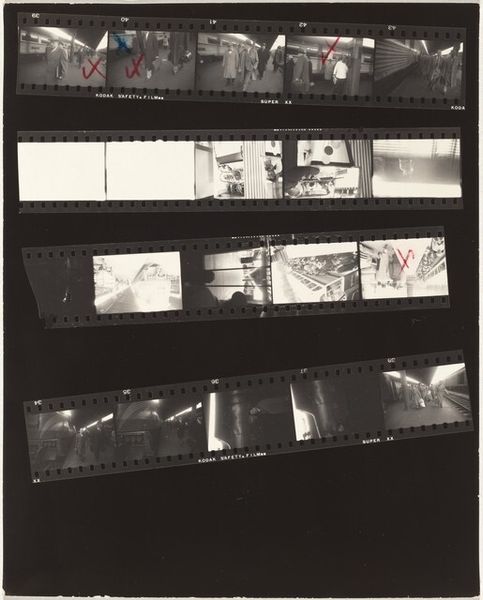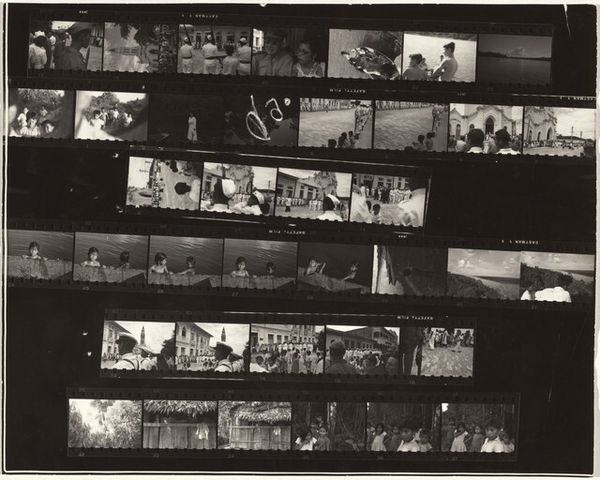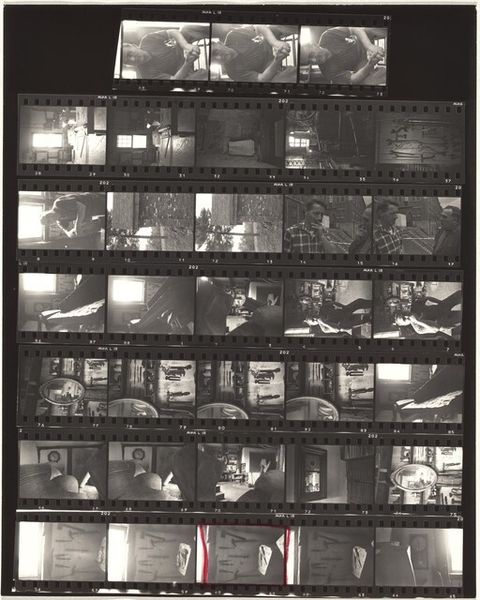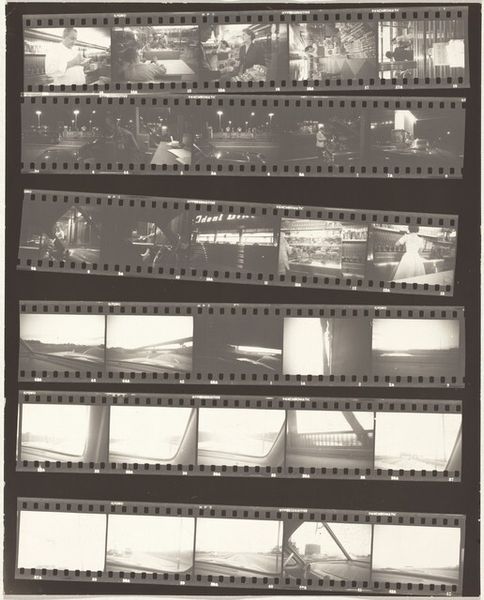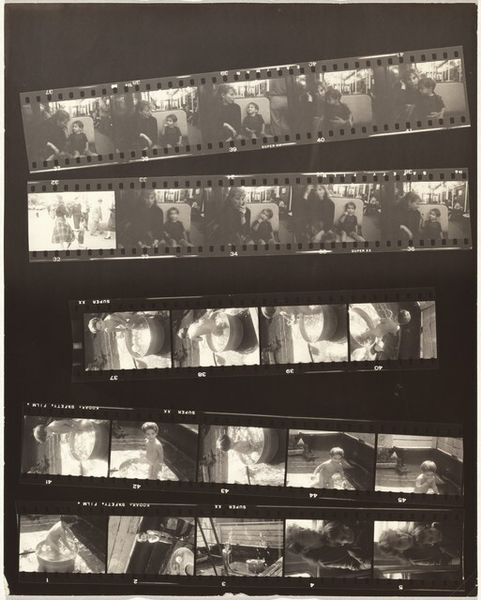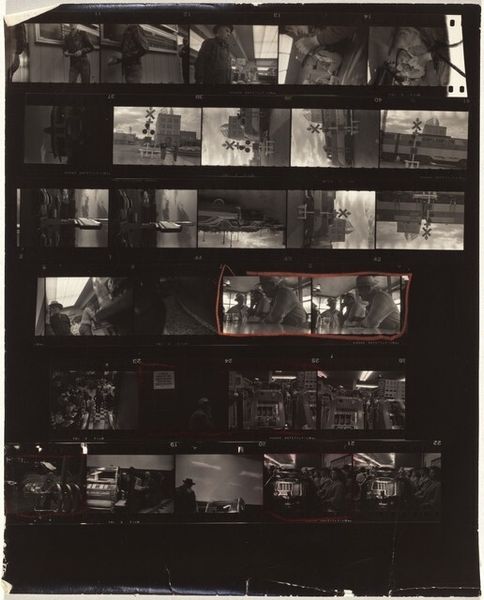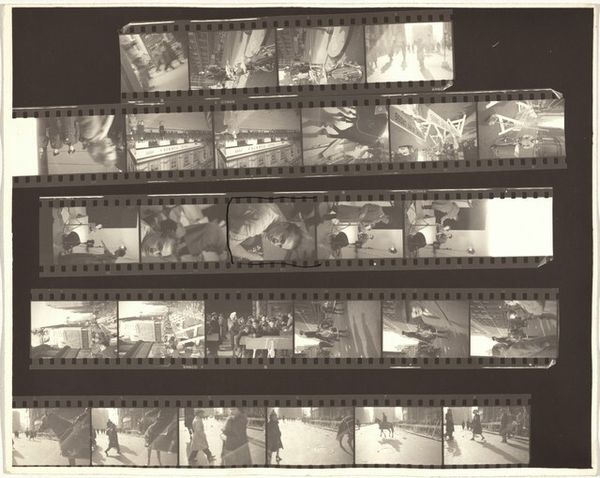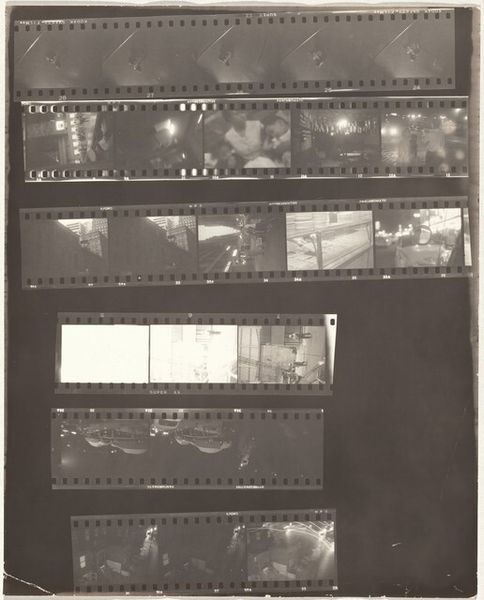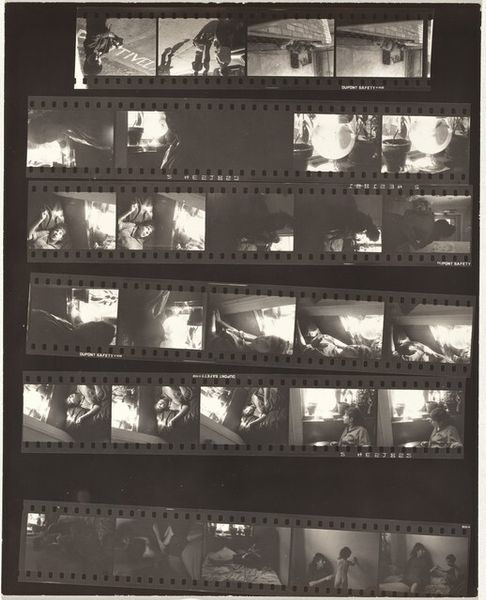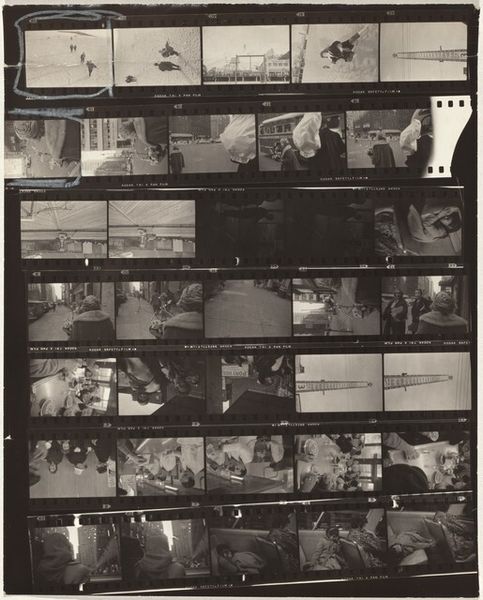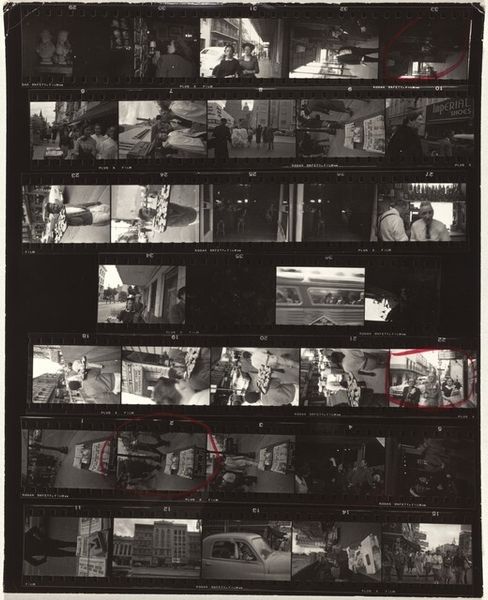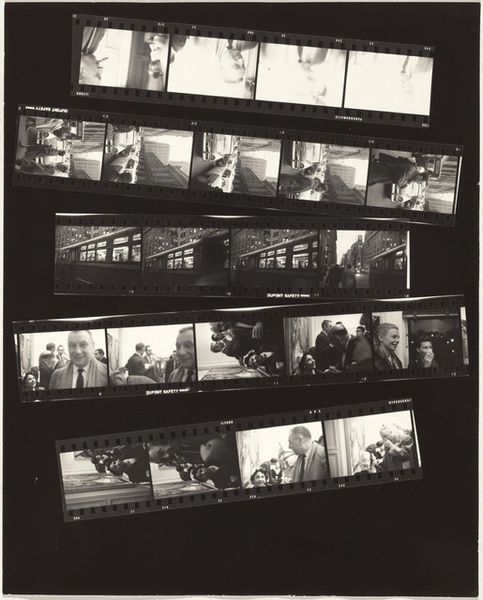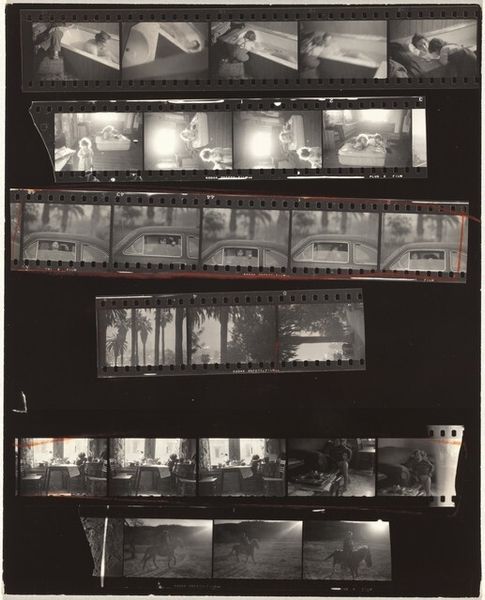
Dimensions: overall: 25.2 x 20.2 cm (9 15/16 x 7 15/16 in.)
Copyright: National Gallery of Art: CC0 1.0
Curator: Robert Frank's “Family—New York City no number,” taken in 1953. It's a gelatin silver print showcasing the artist’s raw, documentary style, moving away from staged, traditional portraiture. Editor: Visually, it strikes me as fragmented. A contact sheet perhaps, with different strips of film containing contrasting imagery, layered or perhaps compiled together. The harsh blacks and whites create a strong contrast; the figures captured have a certain grittiness to them, quite urban. Curator: Exactly. Frank challenged the idealized vision of American life often seen in mainstream media, particularly advertising. "Family" offers a glimpse into everyday life—the mundane moments as much as the significant ones. Editor: The composition, or rather compilation, feels deliberate yet haphazard. I am drawn to how it captures candid expressions rather than posed perfection. The use of light and shadow adds depth but also a sense of unease. Note that sequence of the lying women... why repeated in the compilation? Curator: I read that fragmentation and sometimes blur as representing the fast pace and instability that many experienced in post-war urban life. The “snapshot aesthetic” feels authentic, aligning with his broader project in *The Americans*, challenging norms in both photography and American society itself. Editor: There's an honesty that cuts through. Even without knowing the socio-political background, the stark contrast, the lack of clear focus in places, all communicate an authenticity – maybe a little brutal even. There are children captured as well, what part does the youth play? Curator: Children frequently appeared as subjects, symbolizing the vulnerability but also hope for the future, given societal anxieties related to political tensions and economic disparity at the time. It suggests a complex emotional landscape during post-war era. Editor: Ultimately, it’s about framing, not perfection. He uses the rawness to his advantage. My appreciation grew for its clever compositional value once it started pointing me beyond the image and its material nature. Curator: Precisely. It compels us to look beneath the surface, past idealized representation, into the more challenging realities of the time, and perhaps of any time.
Comments
No comments
Be the first to comment and join the conversation on the ultimate creative platform.
